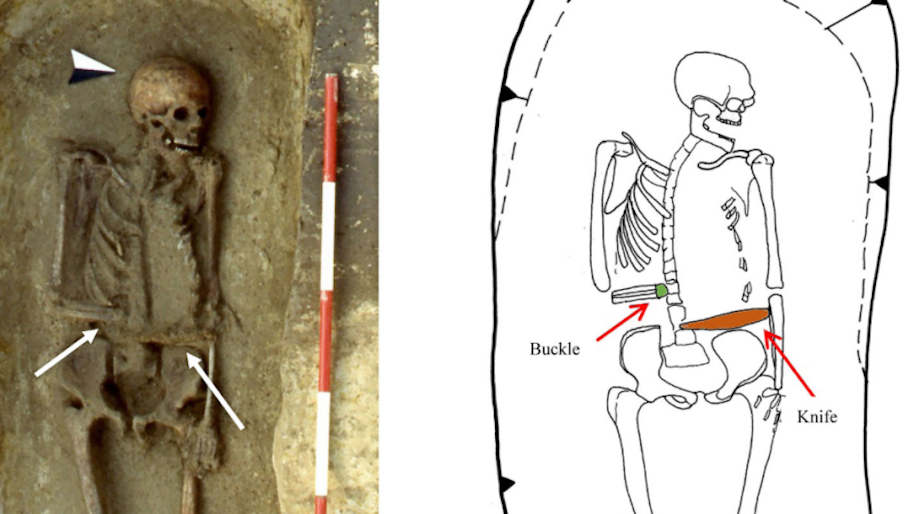Photo: Nantapok (Getty Images)
Well it looks like a man with a knife for a hand isn’t just something out of a creepy comic book, it seems like it’s real life. Well, at least it was between the 6th and 8th centuries.
According to Gizmodo, Italian anthropologists have documented a case that features a Medieval-era Italian male who had his right hand amputated, and managed to use a knife as a prosthetic limb.

Gizmodo
Over 160 tombs have been excavated at the Longobard necropolis of Povegliano Veronese in Veneto, Northern Italy, but this skeleton, pulled from the ground in 1996, is entirely unique. Dated to between the 6th and 8th centuries, the specimen, dubbed T US 380, is an older male who survived long after the amputation of his right hand. But as new research published in Journal of Anthropological Sciences now shows, he replaced the missing appendage with a knife, which he attached to the stump with a cap, buckle, and leather straps. What’s more, dental analysis shows he tied it on with his teeth.
The updated analysis of the skeleton, led by anthropologist Ileana Micarelli from the University of Rome, suggests the man’s right hand was removed by a single blow. Many Longobard males were involved in warfare, so it’s possible he lost it during combat. It’s also possible that it was surgically removed as part of some medical intervention, or it may have been chopped off as a judicial form of punishment, a behavior known among the Medieval Italian Lombards.

There’s more craziness: “Bony healing tissue called callus formed around the ends of the bone, which likely formed as the result of frequent bio-mechanical force.”
Knife-for-missing-hand prosthesis found in 1400 year old #skeleton https://t.co/X8BKdJY0i3 pic.twitter.com/EAc77dWtdh
— AmericasMostHaunted (@amhaunted) April 14, 2018
Well, you can always do one of these: 10 Things You Can Do With Your Body After You Die
Researchers add:
“This Longobard male shows a remarkable survival after a forelimb amputation during pre-antibiotic era. Not only did he adjust very well to his condition, he did so with the use of a culturally-derived device, along with considerable community support. Most likely, he had a prosthesis that was used to protect the stump…The survival of this Longobard male testifies to community care, family compassion and a high value given to human life.”
There isn’t enough evidence that shows how this bad ass used his “hand,” but let’s assume he used it to protect himself and to stab apples so that he can eat them. Let’s also assume that no one dared to mug this guy.





